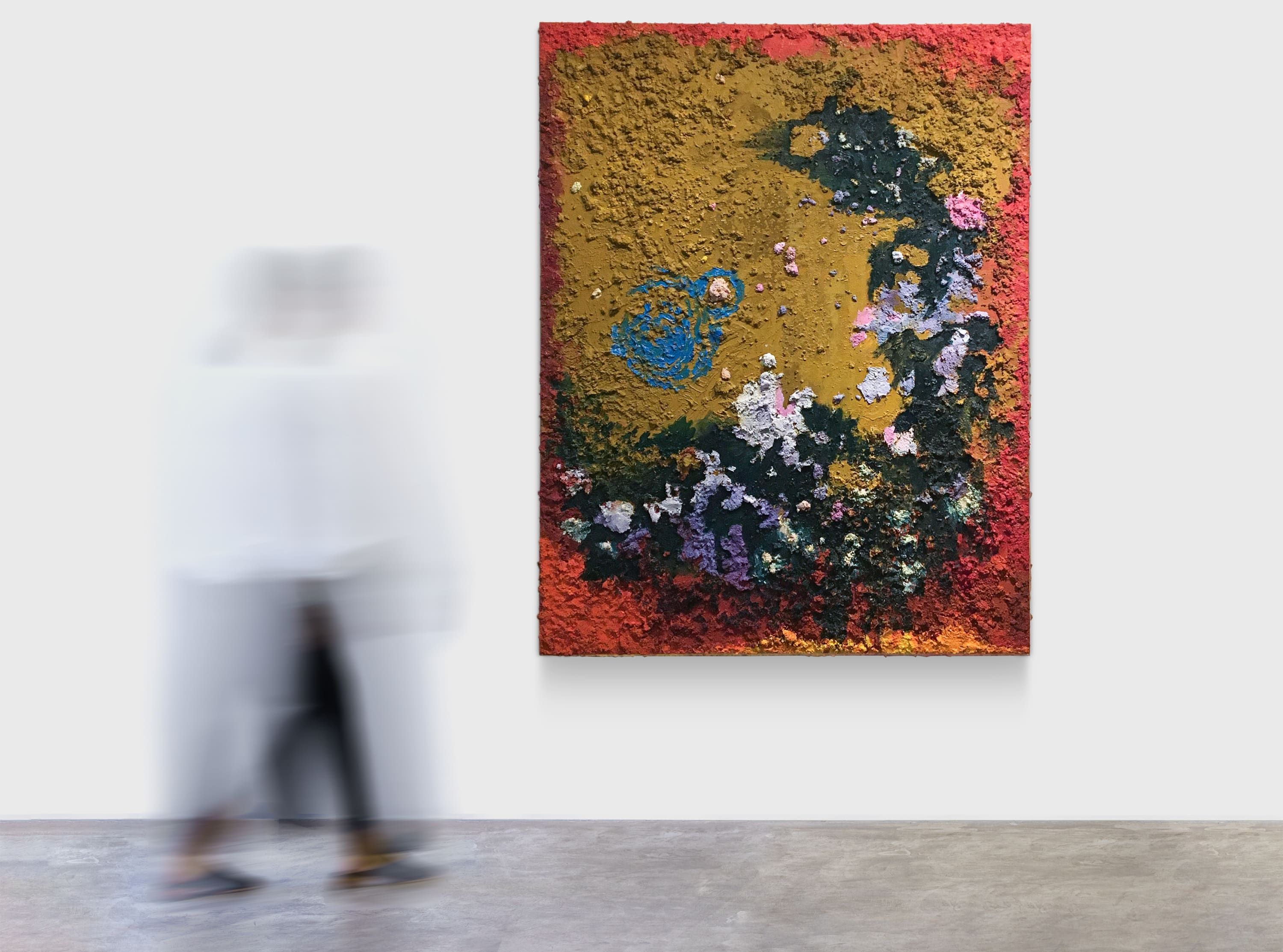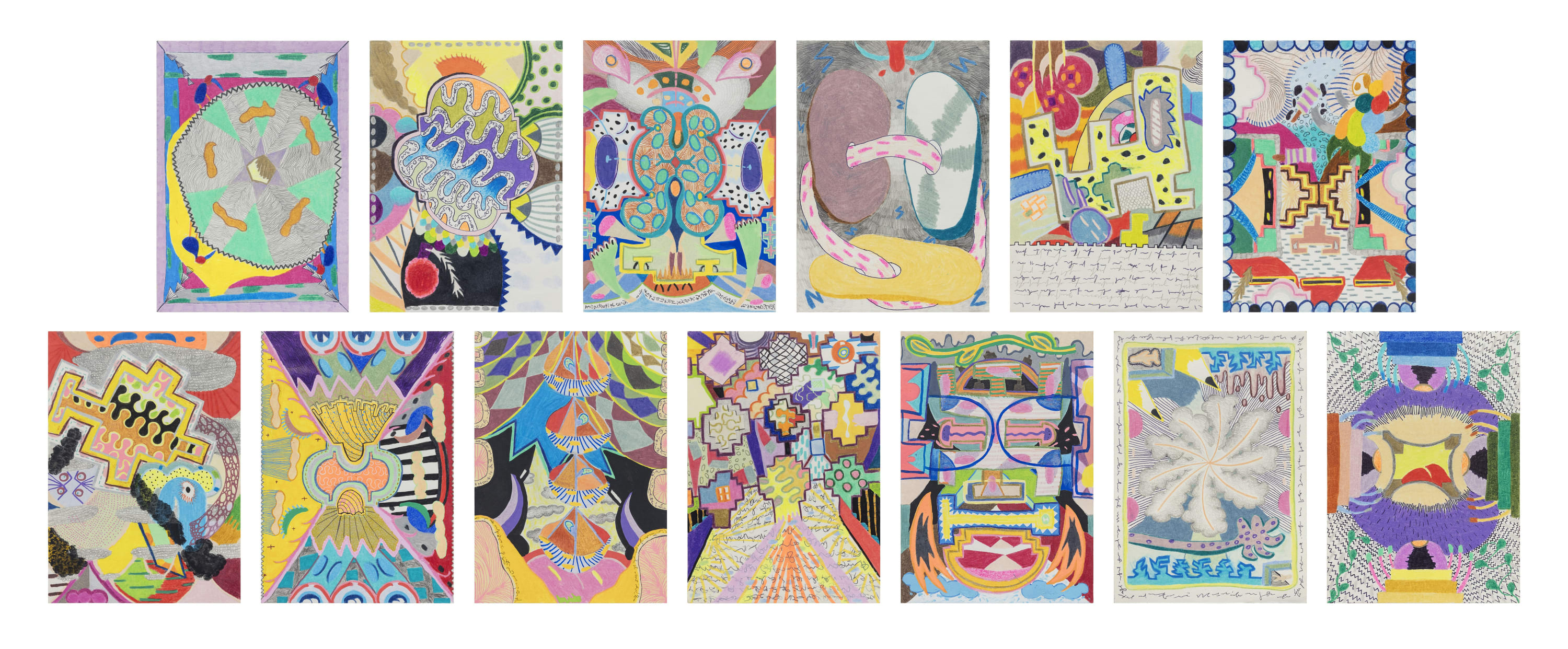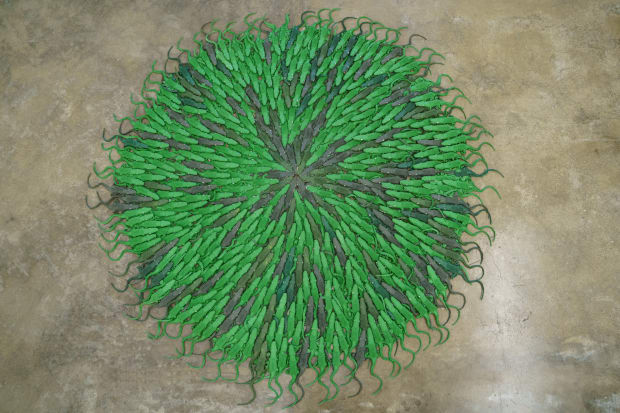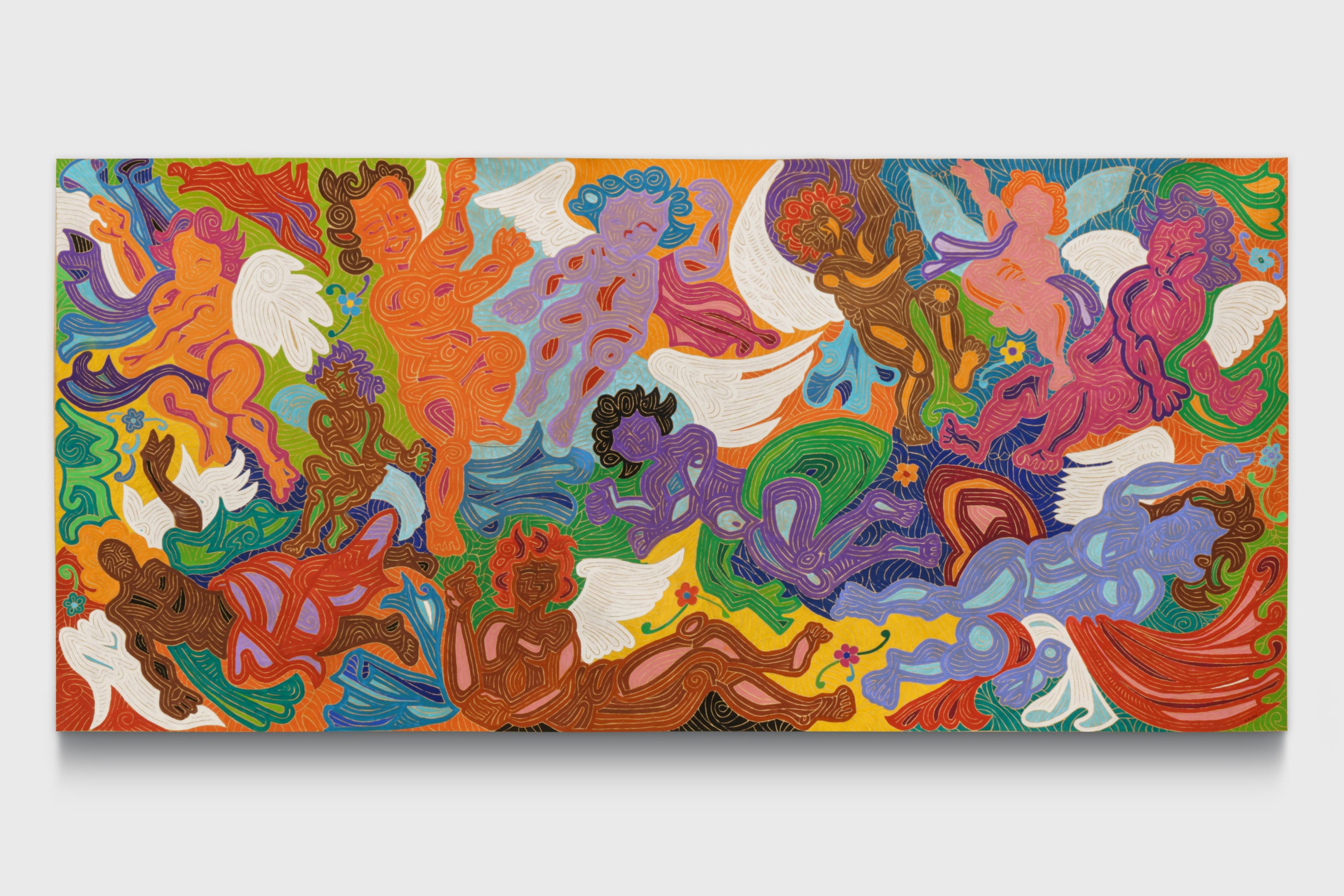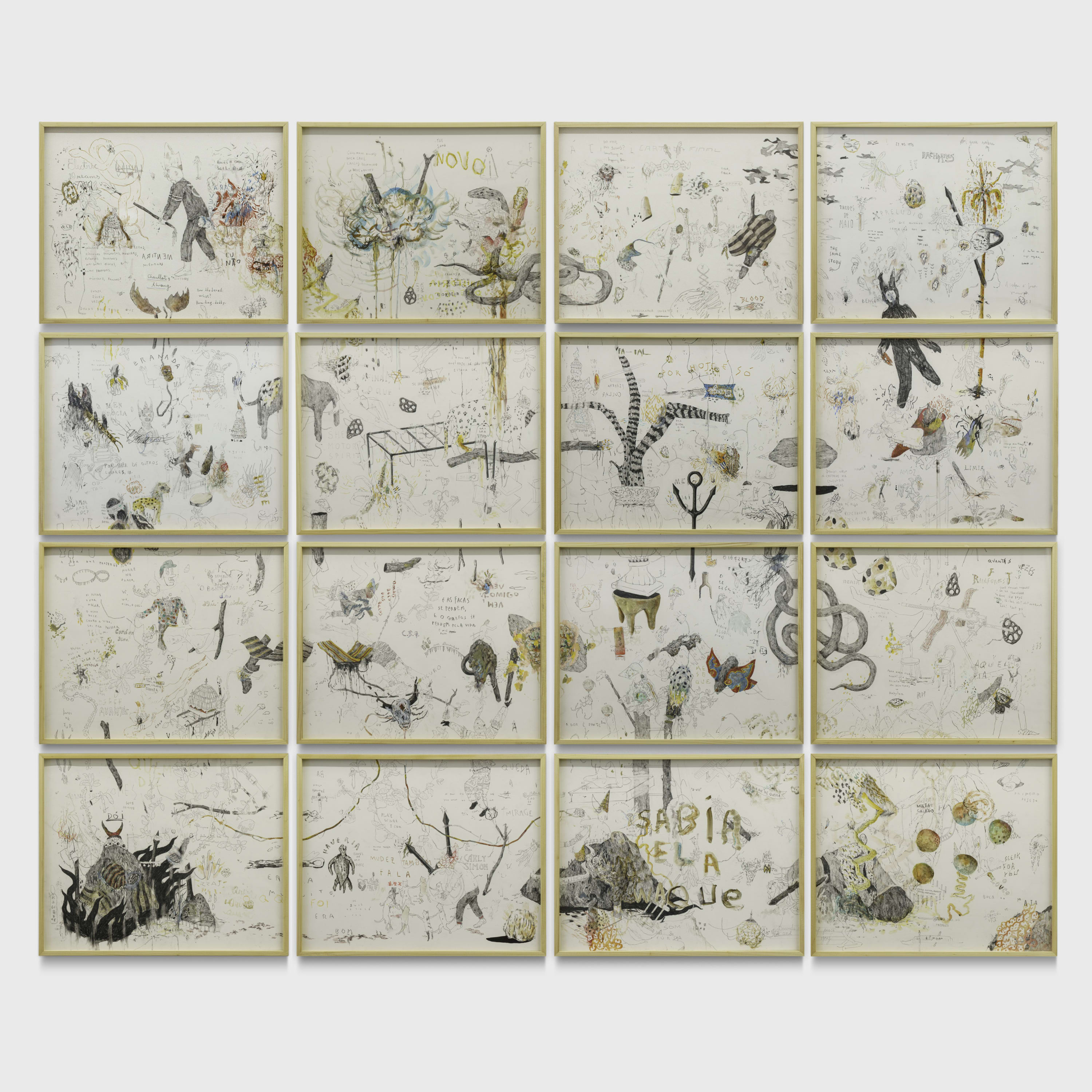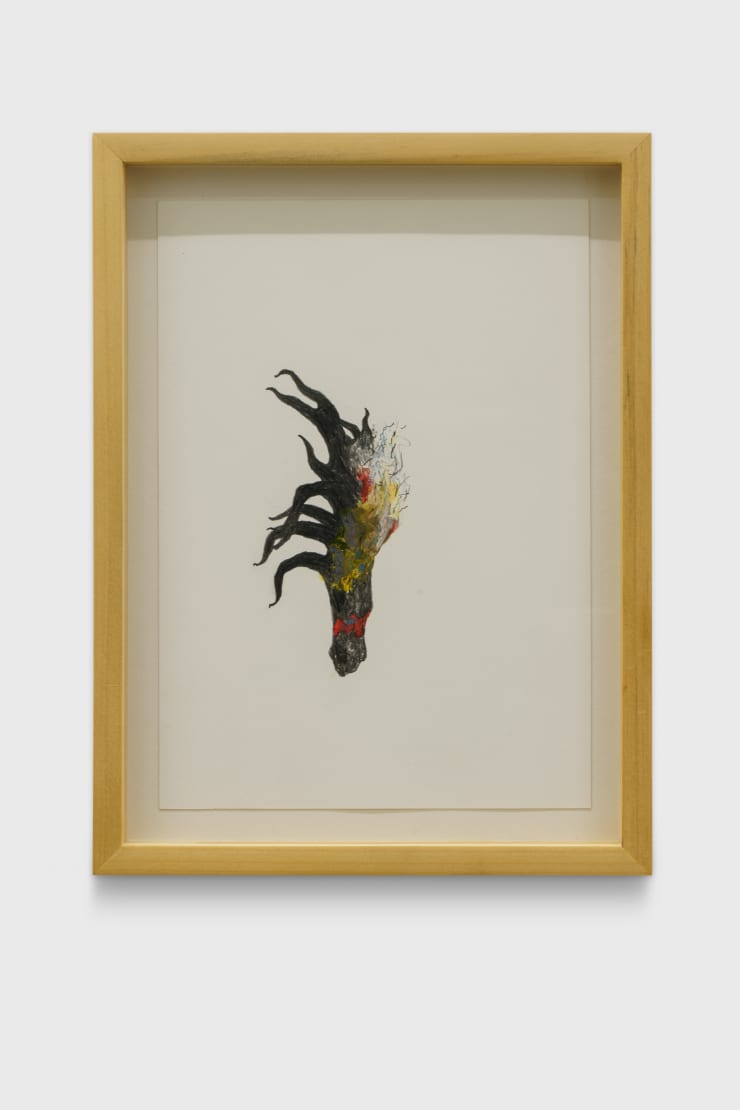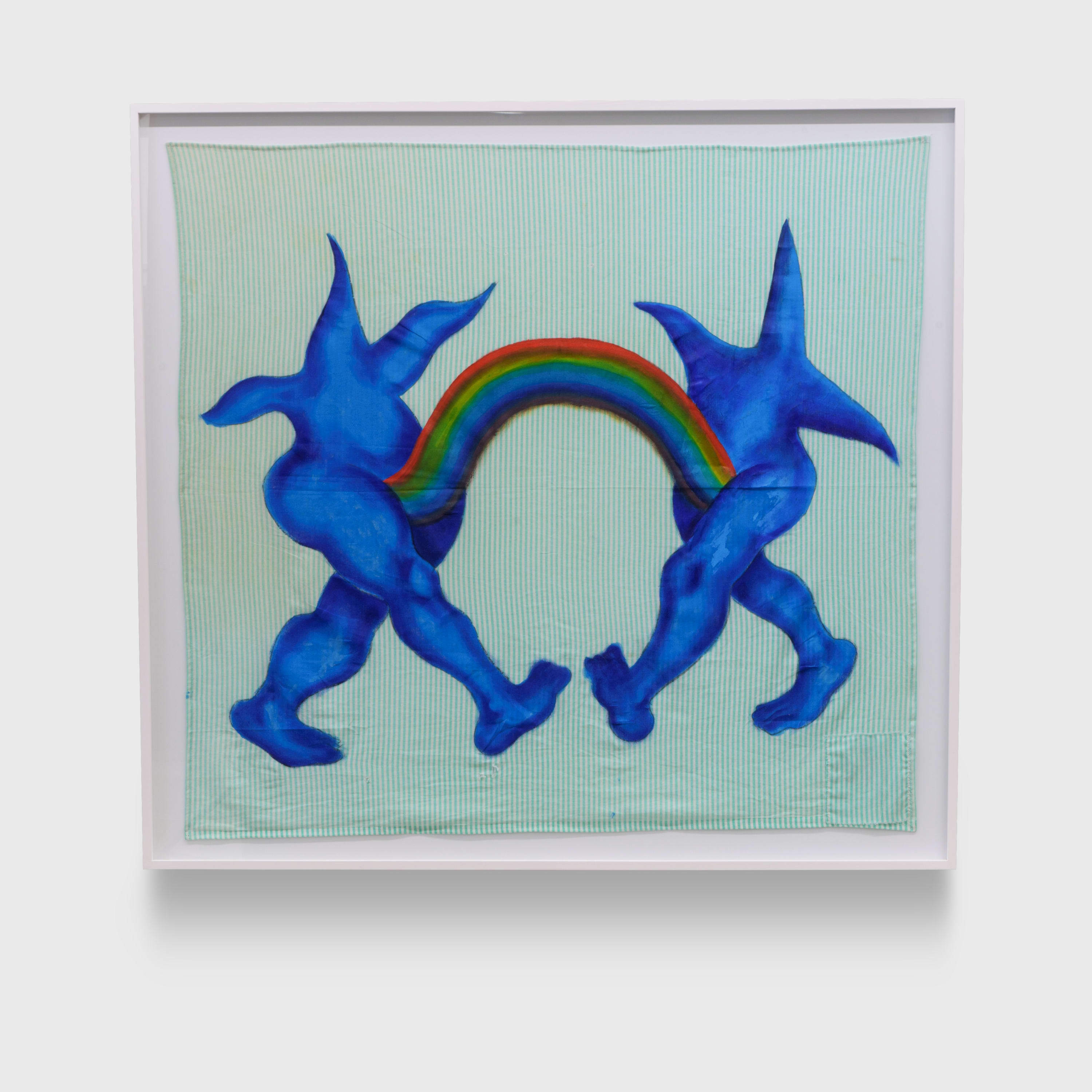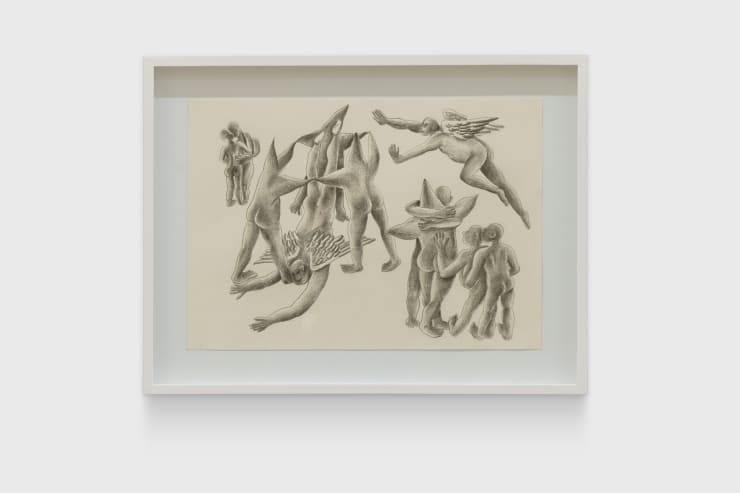-
electric dreams
curated by raphael fonseca
may 29 – august 14, 2021
nara roesler rio de janeiro
-
-
Nara Roesler Rio de Janeiro is proud to present the exhibition Electric Dreams, curated by Raphael Fonseca. The presentation includes works by ten artists of different generations and from different regions of Brazil, whose works converge in their engagement with sensorial stimulation, physicality and the human body, while also evoking the oneiric realm.
-
Electric Dreams
Raphael FonsecaOver the past few months, many close ones have told me that they have been dreaming constantly in their sleep—they have described a few elements such as, travels, conversations with and images of people who have passed away, science, vaccines and surrealist situations. As we live through a pandemic that has perpetuated with different waves in Brazil, and are beset by an extremely irresponsible government in terms of taking care of the population, we seem to be living a daily nightmare with perpetuating tragedies.
Could this excessive dreaming be interpreted as an escape following fifteen months of emotional swirls, most of which the grand majority of the population—not just Brazilian—but worldwide, had never felt before? Could dreaming be perceived as an attempt to offer some form of maintenance for our mental health? The artists presented hereby seem to answer this question affirmatively.The words ‘electric dreams’ are derived from from two intricately related sources: it refers to a fiction film of the same title directed by Steve Barron and released in 1984, and to the music created specifically for the film titled Together in Electric Dreams, composed by Giorgio Moroder and Philip Oakey, best known for being the lead singer of the band The Human League. The cinematographic narrative rests on the story of a computer that, in its ability to record audio and control all of the machines in his owner’s home, experiences love as it begins to hear the neighbor playing music. Through listening and through its attempt to communicate with her, a dilemma emerges: how could a machine experience love, pleasure and sex without a human body?
In facing the impossibility of concretizing this encounter of fluids, the computer understands that, as the song says, ‘we’ll always be together / However far it seems / we’ll always be together / together in electric dreams’. The song, steered by Moroder’s experimentations with electronic music, invites us to dance and remember the gift that is life and our ability to dream.
Electric dreams is an exhibition that assembles artists who engage with the sensorial, the sensual and our capacity to dream through works that evoke the human body, like the film and its music, both dating back to the peak of pop culture in the 1980s.
This physicality transpires not only through the representation of certain images, but also through the way in which the works were made artisanally with drawing, painting, and object collage. The works presented hereby are characterized by textures and details that make us feel the importance of time in the artists’ practice. At a time where social isolation is recommended and, like in the aforementioned film, our sociability is often mediated by computers, we are invited to observe the minutiae of these investigations’ materiality.
This small assemblage of works also posits a conversation between generations. Departing from an example of classical-narrative cinema from the 1980s and observing how another generation has turned towards an intense experimentation with color, large scales, hedonist narratives, iconophilia and seriality of imagery, it is an honor to count artists who have played an essential role in the history of art of Brazil among the exhibition: Cristina Canale, J. Cunha, Lia Menna Barreto, and Victor Arruda.
Relishing in their images and learning from the stories of these artists—about their first experiences with visual arts, which occurred in an experimental manner during and right after the military dictatorship of Brazil—, we become certain that, despite being on the brink of chaos, creating worlds is essential.
Dreaming is also resisting. -
-

Ana Cláudia Almeida
Untitled, 2021
oil, sand, PVA, acrylic resin and pigment on canvas
140 x 180 cm | 70.9 x 55.1 in -

Ana Cláudia Almeida
Untitled, 2020
oil paint and oil pastel on canvas
100 x 80 cm | 39.4 x 31.5 in -
-

Victor Arruda
No espelho, 2019
acrylic paint on canvas
140 x 190 cm | 55.1 x 74.8 inVictor Arruda
Victor Arruda is one of the great figures of the Geração 80 in Brazil, who has experimented with painting since the end of the 1970s, beginning during the country's military dictatorship. With images that recall the visual culture of comic strips, Arruda's works present several narratives guided by sexuality, humor, and everyday life in a chaotic and inequitable city like Rio de Janeiro. His paintings illustrate ephemeral encounters, abusive relationships and different understandings of the human body. The works exhibited in this show are all new and emerge from a recent series through which the artist reflects on his own trajectory, all while maintaining his characteristic segmentation of space and narration, as well as his distinctive use of color and depiction of body parts that mirror and repeat themselves throughout different parts of the canvas.
-

Victor Arruda
Duas famílias, 2020
acrylic paint on canvas
180 x 125 cm | 70.9 x 49.2 in -
-

Thiago Barbalho
Peito de pombo, 2021
colored pencils, graphite, ballpoint pen, permanent marker, acrylic, oil and spray on paper
101 x 116 cm | 39.8 x 45.7 inThiago Barbalho
Thiago Barbalho's work is centered around color. The artist notably creates accumulations of images characterized by strong and often clashing colors, which imitate the shape of small objects and situations, colorful eyes and geometric shapes, all of which agglomerate and do note concede any space to each other. Interestingly, the amalgamation of visual information clashes to such an extent that, from afar, it creates a harmonious composition. One's eyes can rest on the works for a lifetime without ever running out of new details to discover. In addition to a large scale drawing, the exhibition also presents a series of small drawings produced during a trip to the Peruvian Amazon, in an encounter with the Shipibo-Conibo people.
-

Thiago Barbalho
Atrás do que vi (Yarinacocha, Amazônia peruana), 2021
colored pencils, graphite, ballpoint pen, permanent marker, acrylic, oil and spray on paper
13 pieces of 21 x 14,8 cm | 13 pieces of 8.3 x 5.8 in -
-

Lia Menna Barreto
Tapete de jacaré, 2003
rubber alligators
5 x ø 200 cm | 2 x Ø 78.8 in -

Lia Menna Barreto
Pintura de Taiwan, 2003
rubber objects
150 x 312 cm | 59.1 x 122.8 in -

Exhibition view. Photo: © Pat Kilgore
-
-

Cristina Canale
Lacrima Christie, 1989
oil paint on canvas
2 pieces of 180 x 150 x 4 cm | 2 pieces of 70.9 x 59.1 x 1.6 inCristina Canale
Since her first exhibitions in the 1980s, Cristina Canale has experimented with the language of painting. Having first explored the large scale, the artist subsequently worked with an array of sizes, all of which coincide in Canale's ability to create images that occupy a liminal space between abstraction and figuration. The artist uses color to delineate and fill in clothing patterns in her compositions, as well as landscapes, yet her compositions are always imbued with an imitative sense. The work shown in this exhibition is Lacrima Christie dated 1989; it is part of a series of paintings, which the artist produced at a time where she responded to—both in her colors and formats—the certain conceptions of landscape painting.
-

Exhibition view. Photo: © Pat Kilgore
-
-

J. Cunha
Barroco Safado, 2012/2013
acrylic paint on canvas
140 x 300 cm | 55.1 x 118.1 inJ. Cunha
J. Cunha is one of the most important living artists of Brazil. With a long trajectory beginning in the 1960s, the artist has experimented with colors and shapes in a wide array of formats— painting, drawing, stages, installations and objects. As a dancer, costume designer and designer, the artist creates images that dialogue with ancestral afro-indigenous knowledge, often experienced in Brazil. He is well-known for having conceived the visual language of Ilê Aiyê, the oldest afro group in the carnaval of Salvador, established in 1974. His images speak to the human body due to their scale, and to the way in which the artist employs color. Due to his spatial sensibility, the artist has also been able to formulate various creations for the public space. This exhibition presents a recent painting, dated 2013, where the so-called 'Brazilian baroque' is reconstructed according to his distinctive use of color.
-
-

Virgílio Neto
Electric Dreams, 2021
graphite, watercolor, colored pencils and pastel on paper
16 pieces of 40 x 50 cm | 16 pieces of 15.7 x 19.7 inVirgílio Neto
Virgílio Neto has experimented with drawing since the beginning of his career, creating juxtapositions and summations of visual and textual elements. In his work, the artist makes use of different formats - from unique pieces fragmented into numerous paper sheets, to drawings placed directly onto the floor. His particular investigations emerge through the details in his works —sentences in English and Portuguese, short references to the history of art and a wide array of textures, that are only achievable with a high command of pencils and watercolors. One's gaze is thus invited to roam through the clouds of images, to access one's own personal inventory of images and objects, and to continue the narratives suggested by the artist.
-
-

Renato Pera
80 desenhos (bactérias) series, 2019
oily pastel on paper
80 pieces of 20 x 28 cm | 80 pieces of 7.9 x 11 inRenato Pera
Renato Pera has recently developed an interest in images of the absurd. The artist evokes imaginary pop, citing horror films through the use of techniques such as digital manipulation, video and photography. Uninterested in offering a documentative gaze of the world, Pera prefers exploring the artificiality of imagery. In this extensive series of drawings, he created images that engage with an ample imaginativeness around the idea of the bacteria - the body of work consists of 80 color images, which call for the public to observe its different forms, colors and sizes, as if the audience were in a fictitious microbiology laboratory. At this historic moment in time, still plagued by a pandemic, the images address a relationship with science that is characterized by obsession, hope and delirium.
-
-

Kauam Pereira
Untitled, 2021
acrylic paint on cotton fabric
112 x 121 cm | 44.1 x 47.6 inKauam Pereira
Through his drawings, Kauam Pereira creates compositions centered around the human body. His images construct large narrative cycles that include human figures, flying figures and anthropomorphic stars, all of which coexist, dance, admire and destroy each other. An essential aspect of his work consists of demonstrating that his characters are in constant transformation and that exchanging fluids is essential for the flux of life. Recently, the artist has experimented with painting on found surfaces - with this, the intimacy embedded in his narratives take on a new layer as one denotes the use of reused materials as a background for his fantasies.
-
-
-

Maya Weishof
Depois daqui, 2021
oil paint, oil and dry pastel and sewing on linen
250 x 528 cm | 98.4 x 207.9 inMaya Weishof
Maya Weishof's practice revolves around the relationship between the human body, painting, color and excess. In using an ample scale of colors, the artist is able to create images of bodies—often female—in different torsions, illustrating positions that blur between violence and sensuality. Weishof's works engage with the visual tradition of classical frescoes, often consisting of a major and central scene, surrounded by other small and parallel narratives. Her distinctive use of color imbues the conjunction of visual information, confusing the spectator's gaze and, like that of other artists in the exhibition, calling for a long process of contemplation.

